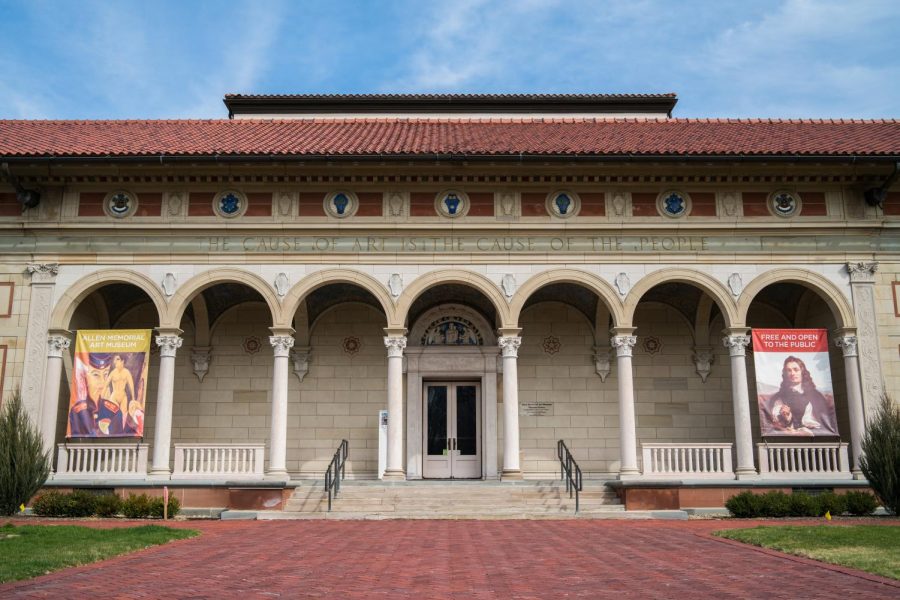AMAM Revises Mission Statement, Emphasizes Accessibility and Adaptability
The Allen Memorial Art Museum has adopted a new mission statement.
“A Deep Heritage, A Dynamic Future: Community, Creativity, and a Culture of Care,” reads the title of the Allen Memorial Art Museum’s new five-year strategic plan. The plan which includes an updated mission statement, values statements, and vision statement, was approved last month by Dean Kamitsuka as part of the AMAM’s ongoing process of routine re-accreditation by the American Alliance of Museums. The new mission statement, updated for the first time since 2006, reads, “The Allen Memorial Art Museum at Oberlin College inspires curiosity, inquiry, learning, and connection through experiences with original works of art for the broadest audience possible, both on campus and beyond.”
At 31 words, the new statement is less than half as long as its 85- word predecessor. Dr. Andria Derstine, John G.W. Cowles director of the AMAM, said that the change is reflective of a trend toward shorter, more accessible mission statements. The strategy outlined in the statements is a product of the pedagogical reckoning museums worldwide have faced in recent years.
“It used to be that museums put information on labels, and they would have speakers come in and speak,” Derstine said.“Certainly, we do that, but it’s not a one-way flow of information from the museum to you. It’s now explicitly a two-way flow of information.”
The document reflects a renewed dedication to institutional evolution and community collaboration.
“For many years, … the Allen has been very receptive to the community — we’ve tried to be that way,” Derstine said.
The AMAM’s Curator of Academic Programs, Hannah Wirta Kinney, also highlighted the focus on collaboration in recent initiatives.
“[They are] indicative of how the museum is really seriously integrating different perspectives and allowing them to open up how we’re thinking about our work,” Kinney said. One such initiative is Shared Art. Since the start of the program in 2021, AMAM staff have selected one work of art from the collection to be a starting point for conversation among incoming students. Through Shared Art and other initiatives such as exhibit focus groups held by Sam Adams, Ellen Johnson ’33 Assistant Curator of Modern and Contemporary Art, the Allen is trying to adopt a community-based approach, now formally outlined in the mission statement.
Knowing the AMAM re-accreditation process was on the horizon, early work on the strategic plan began in the fall of 2020.
“I started thinking about … how were we going to go through this process in a way that was inclusive, so every single staff member of the museum was going to be involved,” Derstine said. “We also wanted to involve faculty, some students, community members … We wanted to invite a lot of stakeholders of the museum … to be part of the process.”
The core group responsible for the plan was the Strategic Planning Committee, comprised of AMAM staff members Derstine, Kinney, Eric and Jane Nord Family curator of education Jill Greenwood, former curator of European and American art Alexandra Letvin, and Katherine Solender, OC ’77.
According to Derstine, a key change in the new mission statement is “strategic emphasis on connections with other people in the community,” along with a focus on care. “Not just literally care for the objects … but care for the com- munity, and care for our connections with the community,” Derstine added.
Kinney believes that the emphasis on care is the result various social movements in the past couple years.
“I think we all became more aware of care and what care means, and what care looks like, and how it looks to different people, different perspectives,” Kinney said.
One notable example of “care” in the strategic plan is an item on the list of values:
“Acquiring, presenting, and caring for the objects in our collection based on the best practices of our field, and in dialogue with source communities,” Kinney explained. “We never thought we knew everything. Museum people never think, like, ‘We have the ultimate answer,’ this is just part of how museums present information that I think has this kind of barrier, opaqueness to it. But these [statements] are just putting out these values in different ways and saying, ‘These are things that we’ve believed, and now they’re just here for you to understand that these are who we are behind this facade.’”
Derstine aims for visitors to identify with what they find behind the facade.
“I just hope that people will feel more comfortable and feel like they’re a part of the museum, whether they felt like that before or never felt like that before,” she said.










